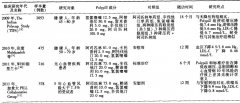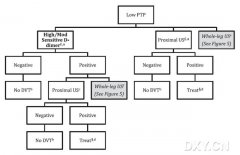读医学网
2012年美国心脏病协会、中风协会蛛网膜下腔出血治疗指南
发布时间:2014-05-19 10:34 类别:神经系统疾病 标签:increasing falling suggest rates 来源:丁香园
To respond to the growing call for more evidenced-based medicine, the American Heart Association (AHA) commissions guidelines on various clinical topics and endeavors to keep them as current as possible. The prior aneurysmal subarachnoid hemorrhage (aSAH) guidelines, sponsored by the AHA Stroke Council, were previously issued in 1994 and 2009. The 2009 guidelines covered literature through November 1, 2006.2 The present guidelines primarily cover literature published between November 1, 2006, and May 1, 2010, but the writing group has strived to place these data in the greater context of the prior publications and recommendations. In cases in which new data covered in this review have resulted in a change in a prior recommendation, this is explicitly noted.
aSAH is a significant cause of morbidity and mortality throughout the world. Although the incidence of aSAH varies widely among populations, perhaps because of genetic differences, competing burden of disease, and issues of case ascertainment, at the very least, a quarter of patients with aSAH die, and roughly half of survivors are left with some persistent neurological deficit. That said, case-fatality rates appear to be falling, and increasing data suggest that early aneurysm repair, together with aggressive management of complications such as hydrocephalus and delayed cerebral ischemia (DCI), is leading to improved functional outcomes. These improvements underscore the need to continually reassess which interventions provide the greatest benefit to patients.
Although large, multicenter, randomized trial data confirming effectiveness are usually lacking for many of the interventions discussed, the writing group did its best to summarize the strength of the existing data and make practical recommendations that clinicians will find useful in the day-to-day management of aSAH. This review does not discuss the multitude of ongoing studies. Many of these can be found at http://www.strokecenter.org/trials/. The mechanism of reviewing the literature, compiling and analyzing the data, and determining the final recommendations to be made is identical to the 2009 version of this guideline.
The members of the writing group were selected by the AHA to represent the breadth of healthcare professionals who must manage these patients. Experts in each field were screened for important conflicts of interest and then met by telephone to determine subcategories to evaluate. These subcategories included incidence, risk factors, prevention, natural history and outcome, diagnosis, prevention of rebleeding, surgical and endovascular repair of ruptured aneurysms, systems of care, anesthetic management during repair, management of vasospasm and DCI, management of hydrocephalus, management of seizures, and management of medical complications. Together, these categories were thought to encompass all of the major areas of disease management, including prevention, diagnosis, and treatment. Each subcategory was led by 1 author, with 1 or 2 additional coauthors who made contributions. Full MEDLINE searches were conducted independently by each author and coauthor of all English-language papers on treatment of relevant human disease. Drafts of summaries and recommendations were circulated to the entire writing group for feedback. A conferconference call was held to discuss controversial issues. Sections were revised and merged by the writing group chair. The resulting draft was sent to the entire writing group for comment. Comments were incorporated into the draft by the writing group chair and vice chair, and the entire writing group was asked to approve the final draft. The chair and vice chair revised the document in response to peer review, and the document was again sent to the entire writing group for additional suggestions and approval.
The recommendations follow the AHA Stroke Council’s methods of classifying the level of certainty of the treatment effect and the class of evidence (Tables 1 and 2). All Class I recommendations are listed in Table 3. All new or revised recommendations are listed in Table 4.




